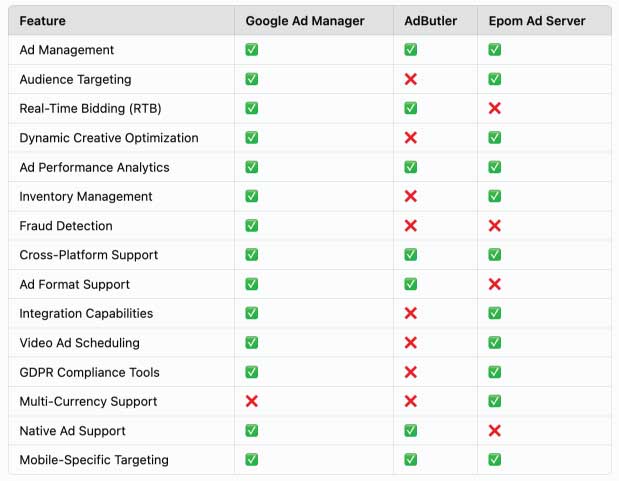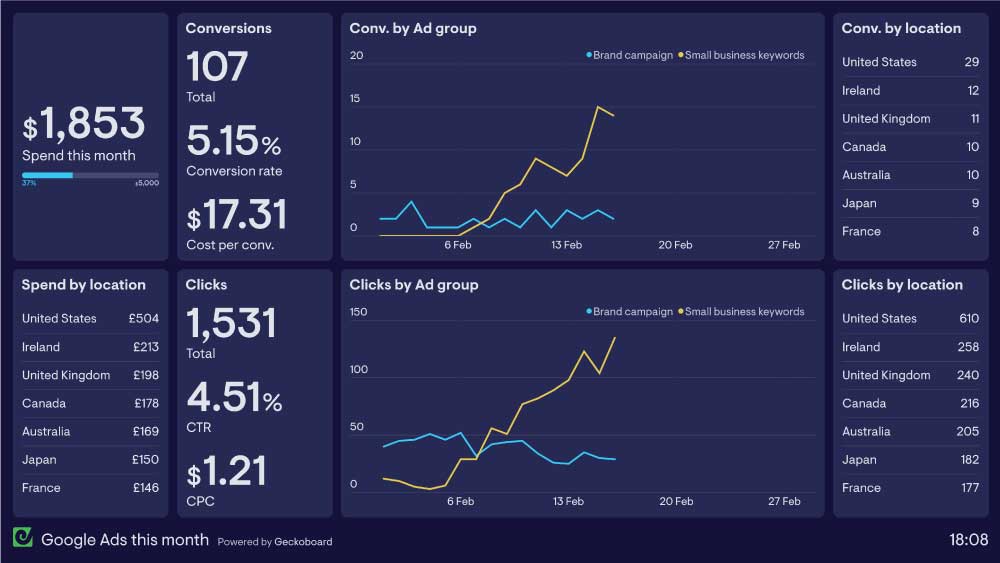Ad Server Software plays a critical role in the digital advertising ecosystem by managing, delivering, and tracking online advertisements across websites, apps, and other digital platforms. These platforms help advertisers, publishers, and agencies maximize the efficiency and impact of their campaigns. Historically, ad management involved manual processes and lacked sophisticated targeting capabilities. Ad Server Software revolutionized the field by introducing automation, real-time bidding, advanced targeting, and detailed analytics, enabling data-driven decisions.
Ad servers are widely used in industries ranging from e-commerce to media publishing. By managing ad placement, optimizing performance, and tracking campaign metrics, they empower businesses to achieve better ROI and improved user engagement. Popular examples include Google Ad Manager, AdButler, and OpenX.

The feature comparison table below highlights the core functionalities that nearly all ad server software products implement, such as ad management, performance analytics, and cross-platform support. These foundational features ensure the basic capabilities needed for managing and optimizing digital ad campaigns. However, some products stand out with specialized or custom features like dynamic creative optimization, GDPR compliance tools, or multi-currency support, catering to unique needs in specific industries or use cases. By examining these distinctions, businesses can identify the software that best aligns with their advertising goals and operational requirements.

In the video below, Jude Sherman from AppsFlyer gives a helpful introduction to how ad servers work and how to choose an ad server platform to manage the distribution of your digital advertising campaigns.
The dashboard screenshot below is from a Google Ads campaign. Ad server software should provide information about the effectiveness of digital ads being run, including how well they’re converting and other metrics that can be used to improve an organization’s ad spend.

Accreditation management software implementations are as varied as the accreditations and certifications whose requirements drive this category of software. However, there are several key features of accreditation management software that most products include.
Ad Server Software is used to manage and deliver digital ads across various channels, track performance metrics, and optimize campaigns for better targeting and ROI.
RTB allows ad spaces to be auctioned in real time, enabling advertisers to bid on inventory dynamically, ensuring cost-effective and targeted ad placements.
Yes, many ad servers include fraud detection tools that analyze traffic patterns and block invalid or suspicious activity to protect advertisers’ budgets.
Audience targeting uses data like demographics, behavior, and location to deliver ads to the most relevant users, increasing engagement and conversions.
Yes, most ad servers support a wide range of ad formats, including banners, video, native, and interactive ads, to suit different campaign needs.
Header bidding allows multiple demand sources to bid simultaneously for ad impressions before the ad server processes the request. This setup increases competition, potentially driving higher revenue for publishers. However, it can also increase latency and server load, making the choice of an ad server with robust processing capabilities critical for managing header bidding effectively.
APIs (Application Programming Interfaces) enable advanced users to integrate custom features, automate processes, and connect the ad server with external platforms such as data management platforms (DMPs), analytics tools, or content management systems (CMS). This flexibility allows developers to tailor the ad server to specific workflows and enhance its capabilities beyond the default offerings.